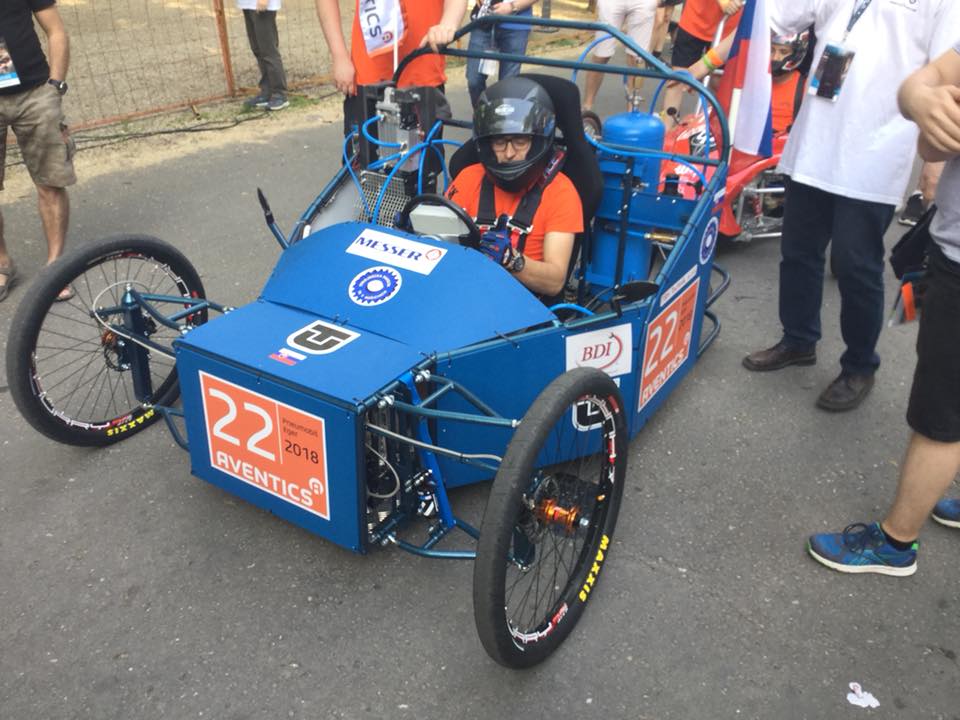The first car with a pneumatic motor in Slovakia
On 10-12 May 2018, the 11th annual "Pneumobil 2018" compressed air vehicle competition will take place in Eger (HU). Student teams from all over the world have the opportunity to enter the competition. The concept of the car is based on the relatively strict rules of the International Aventics Pneumobile Competition 2018 (www.pneumobil.hu).
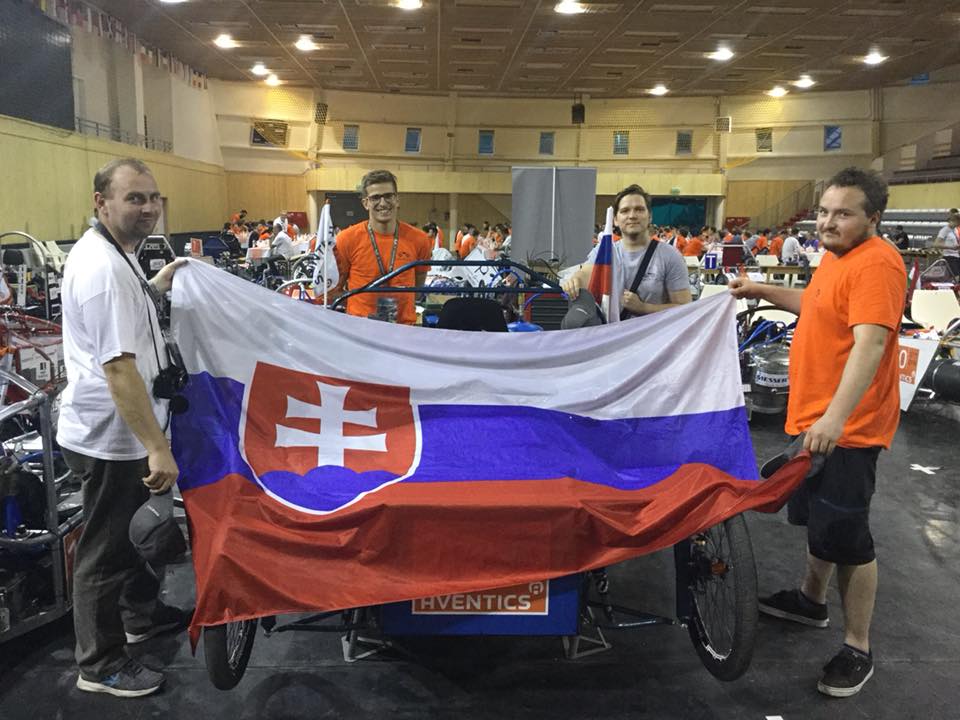
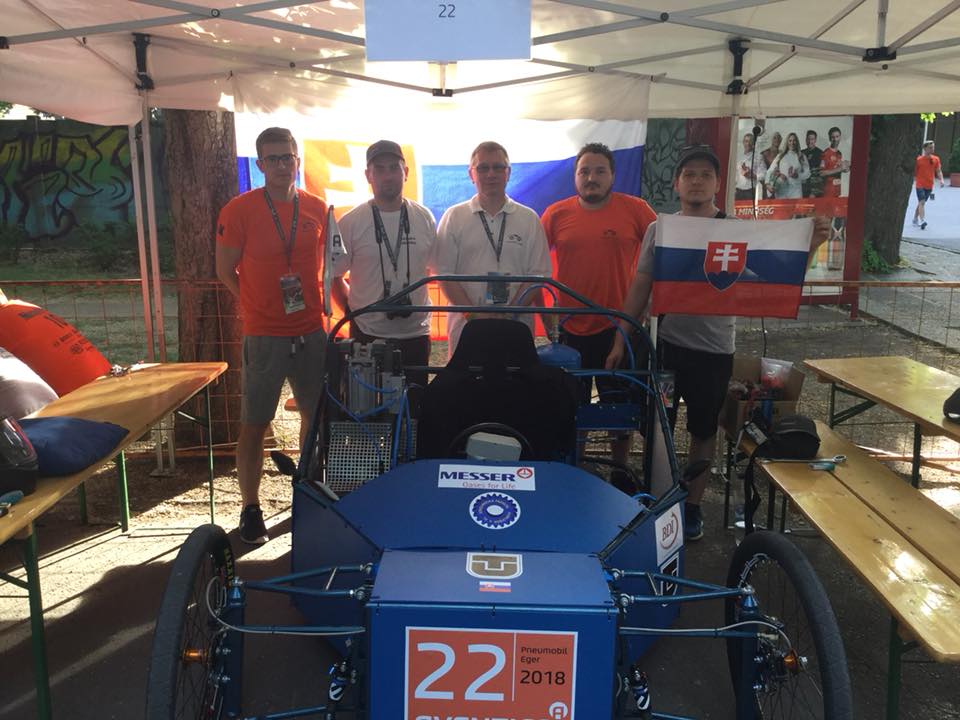
The rules define dimensional restrictions, safety regulations and also limit the scope of the elements used. It is therefore only up to the dexterity and innovation of the teams as they deal with the design of the structure and also the implementation itself. The competition evaluates the innovativeness of the project, the maximum range, the maximum speed and acceleration of the vehicle, as well as the skill of the drivers of the competition team in the race.
The aim of this activity is mainly to involve young enthusiasts in projects in the field of science and technology. Another interesting feature of the project is that the pneumatic elements for the competition teams will be supplied free of charge by Aventics, which is the main organizer of this competition. Aventics is a leading manufacturer of pneumatic components for industrial automation. The control system was supplied by TBH Technik, which is the sales and technical representation of Aventics in Slovakia and technically and logistically directly supports the design and implementation of our tirecar.
So our thanks go to this company.
"Pneumobil" TUKESjF is the first car of this type made in Slovakia. The car has a three-wheel chassis with 26 ”wheels and is powered by a pneumatic three-cylinder engine with a capacity of 1885 cm3. Compressed air is used as the medium. Emissions from such a car are virtually zero and do not pollute the environment at all.
The energy source is the energy of air pressure with a value of 20 MPa in a pressure vessel with a volume of 10 l. The pneumatic motor is formed by three star-arranged pneumatic cylinders, which are gradually activated and by means of a crank transmission, thus the linear movement of these pistons is transformed into a rotational movement of the output shaft of the motor. The engine torque is then transmitted to the rear drive wheel of the car by a chain transmission. The front wheels are located on the sprung axles.
Monitoring the operation of the car and ensuring maximum drive efficiency is solved by the PLC control unit IndraControl L10 Bosch Rexroth
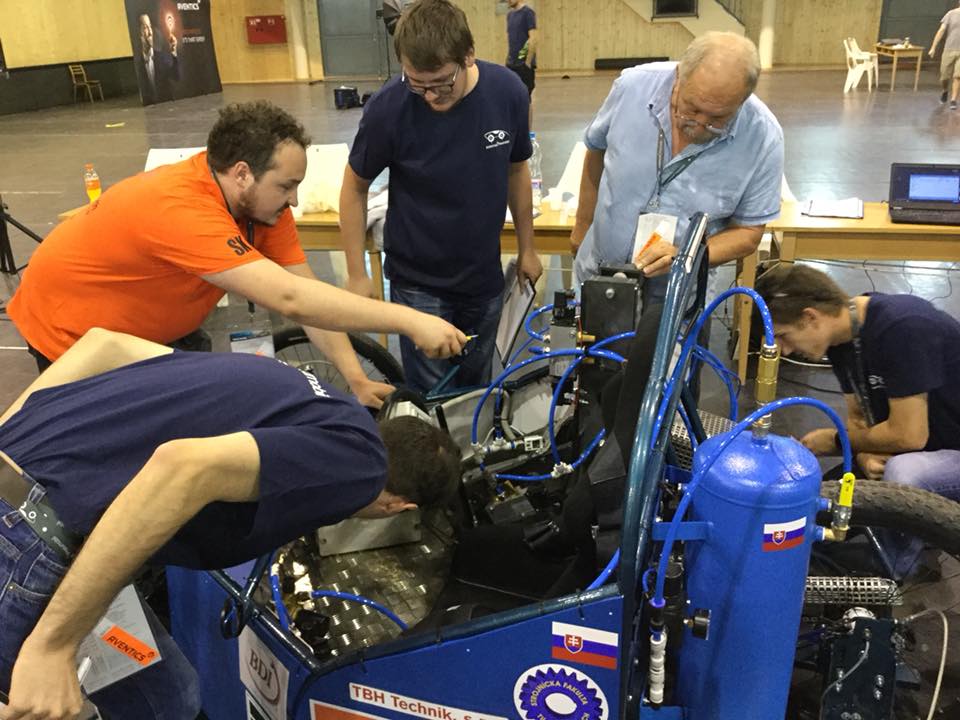
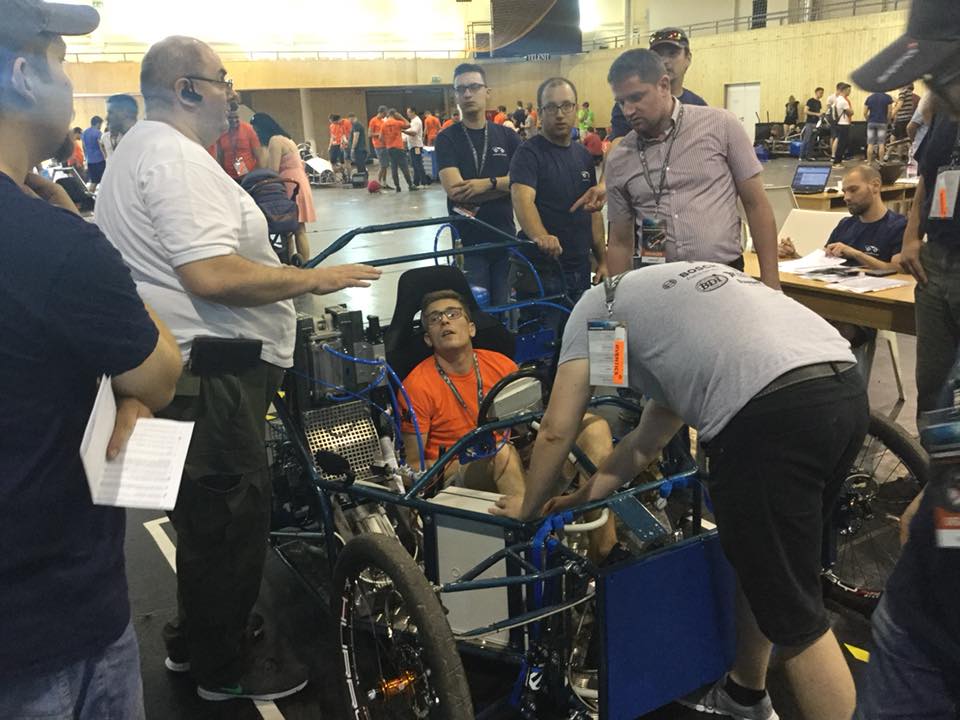
The length of the car is 2390 mm and the width is 1670 mm, the maximum height is 1113 mm. The weight of the whole car is approximately 150 kg. The clear height of the chassis is 88 mm and can be adjusted. The car frame consists of a welded steel structure designed to meet the relevant safety regulations to provide the driver with maximum protection in the event of an accident. During the design of the structure, the frontal impact of the car and its overturning were also simulated. The car is equipped with four-point seat belts and pneumatic safety elements. The pressure vessel is located on the side of the car so that it is protected by a safety frame in the event of an accident. The car is equipped with disc brakes of all wheels and the brake system consists of two separate circuits, front and rear. Two brake cylinders are used, each for one brake circuit. The rear brake circuit contains a parking brake.
